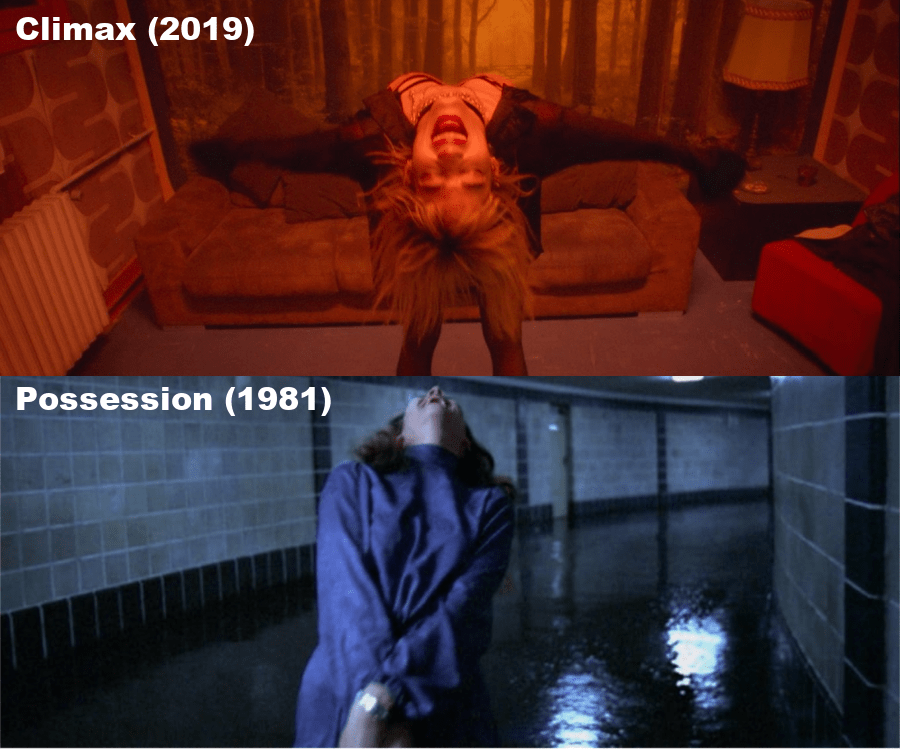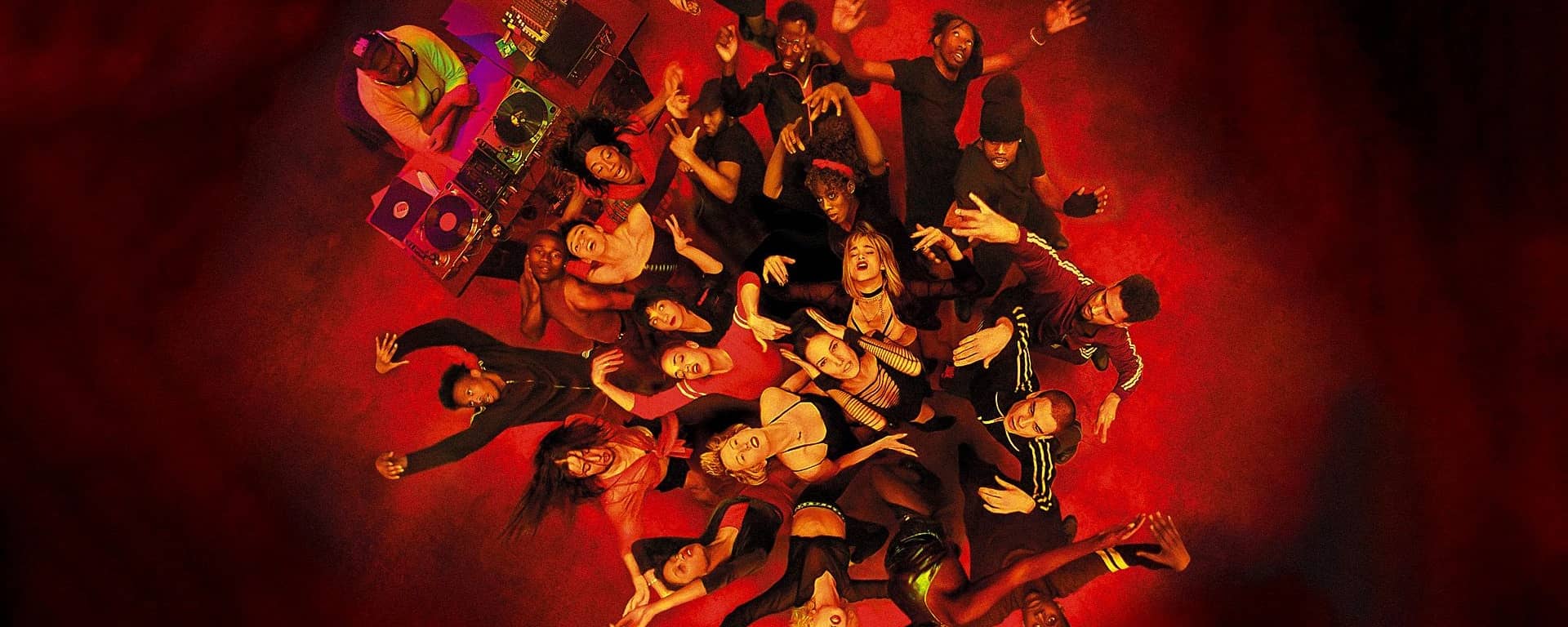As an avid movie watcher, I do not think I have ever had a more uncomfortable and pulse-pounding viewing experience than I did while watching Climax for the first time. The film explores the depths to which psychological horror can go: a practice that is not new to director Gaspar Noé. With a filmography including Enter the Void, Vortex, and Irreversible, his later projects are expected to be just as twisted, if not more. In each of his films, he utilizes soundtracks to enhance and intensify the viewer’s experience.
Set in the 1990s, Climax emphasizes the importance of electronic music within the experimental dance realm, beginning with a group of primarily French dancers congregating for a rehearsal. While dancing and getting to know one another, they drink sangria but are unaware that someone in the group laced their drinks with LSD, opening the gates to a sequence of terrifying events as they try to survive the night. As they attempt to figure out who the culprit is, each character is imprisoned in their own psychedelic nightmare, resulting in an “every man for himself” mindset.
At the start of Climax, Noé immediately showcases his inimitable filmmaking style with a captivating dance performance, paired with “Supernature” by Cerrone, an upbeat dance track that sets the tone of the film. After this routine, the party begins and the buoyant music continues to play.
In the second dance scene of the film, Noé takes a different cinematographic approach, using an overhead camera shot to capture the lively, collaborative dance circle. As the dancers improvise erratic and exaggerated moves, the beat of the music pulsates, with quick and blunt shifts between the songs. Each new song is increasingly intense as the sequence continues. Meanwhile, the energy of the dancers decreases, ending with them laying on the ground in a dazed state. Eventually, two dancers are left, and they drag themselves out of the frame.
Personally, one of the most notable parts of the movie is the opening credits. The opening credits happen 47 minutes into the film, directly after the second dance scene. This is the final scene of the film before chaos strikes. Noé explained his reasoning behind this choice in an interview with Original Cin: “To make that jump, I thought I would put all the credits in the middle. It would be like Stanley Kubrick’s Full Metal
Jacket, which is a kind of diptych: the rehearsal for war, and then war. My movie is about construction and then destruction; the story of how a community can build something and then, for induced reasons or internal reasons, destroy itself and its own creation.”
After listing the film crew and actors, each artist on the soundtrack is named in different font styles.
The soundtrack itself is composed of tracks from notable artists Aphex Twin and Soft Cell, to name a few. The largest contributions, including the track playing during the credits, were created by Thomas Bangalter, ½ of the highly noted French house duo Daft Punk. The beginning of the compilation is upbeat and lighthearted, but like the film, as it progresses, it intensifies and becomes more dramatic.
The second half of the film following the credits is extraordinary and includes a groundbreaking, 42-minute-long continuous shot. These stylistic risks that Noé uses distinguish this film from other psychological horror pieces.
There is one part of the film that completely stands out from the rest, and a large reason for that is because of the song choice that blares in the back. As the main character Selva walks through the maze-like hallway of the dance studio, she experiences the peak of her LSD trip. In the midst of her freakout, you can hear “Windowlicker’’ by Aphex Twin. The haunting yet choppy vocals echo throughout the studio as if they are following each character in their attempts to escape the nightmares they are suffering. This is one of the most fitting musical choices I have seen in cinema, not to mention multiple other perfect choices made throughout the movie. During this scene, Noé also pays homage to the iconic film Possession.

The musical directions Noé takes throughout the course of the movie help to perfectly unravel the horrors of the plot. Listening to the soundtrack outside of seeing the film is a completely different experience, and it is an enjoyable compilation of well-
crafted electronic essentials. I recommend everyone to watch Climax at least once, though it is not for the faint of heart. It is extremely rich in artistic merit and is a thought-provoking and mind-altering piece.
Ella Rustin | “Life is a fleeting pleasure.” | KXSU Promotions & Music Director and Music Reporter

